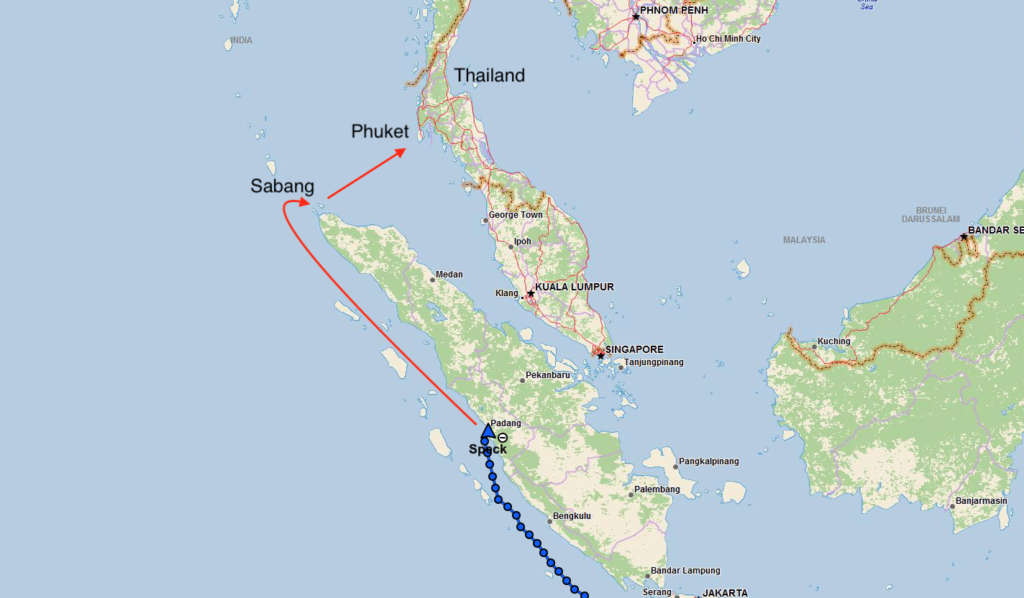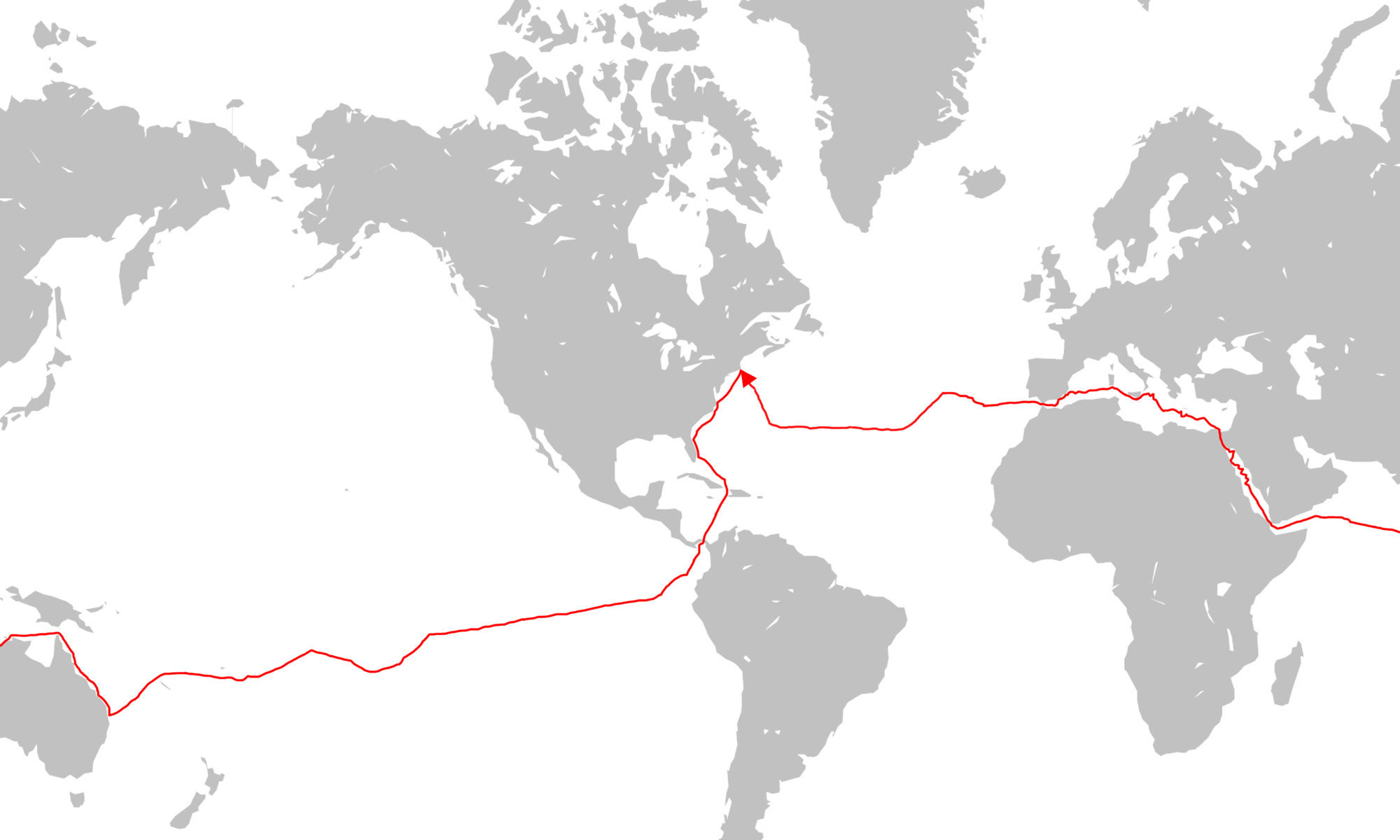Being chased out of the Southern Hemisphere by the NE monsoon season, we have been sailing almost nonstop since leaving Labuan Bajo. In only two weeks we have covered a distance similar to the entire eastern seaboard of the United States. It’s not half bad considering the amount of doldrums we have encountered. Where we are now, the NE monsoon is characterized by light to nonexistent winds during the day accompanied by strong squalls at night complete with 40+ knots of wind, torrents of rain and thunderous lightning storms.
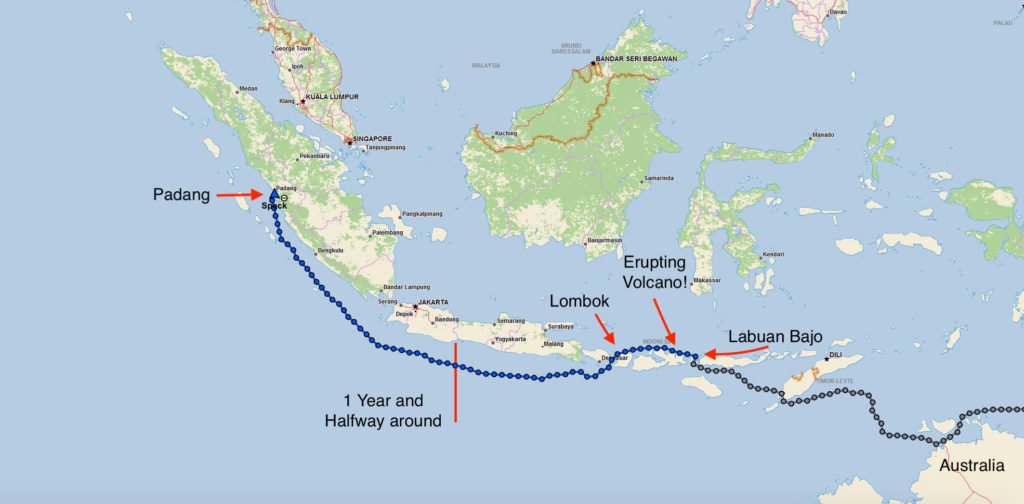
Indonesia has some of the most active volcanoes in the world. This one, located on Sangeang island, consists of two cones and is one of the most active volcanoes in the Lesser Sunda Islands. As we sailed past it, it sent off a large cloud of smoke accompanied with a hearty rumble every 15-20 minutes. In 2014 the farmers in the village below were evacuated just prior to a major eruption.
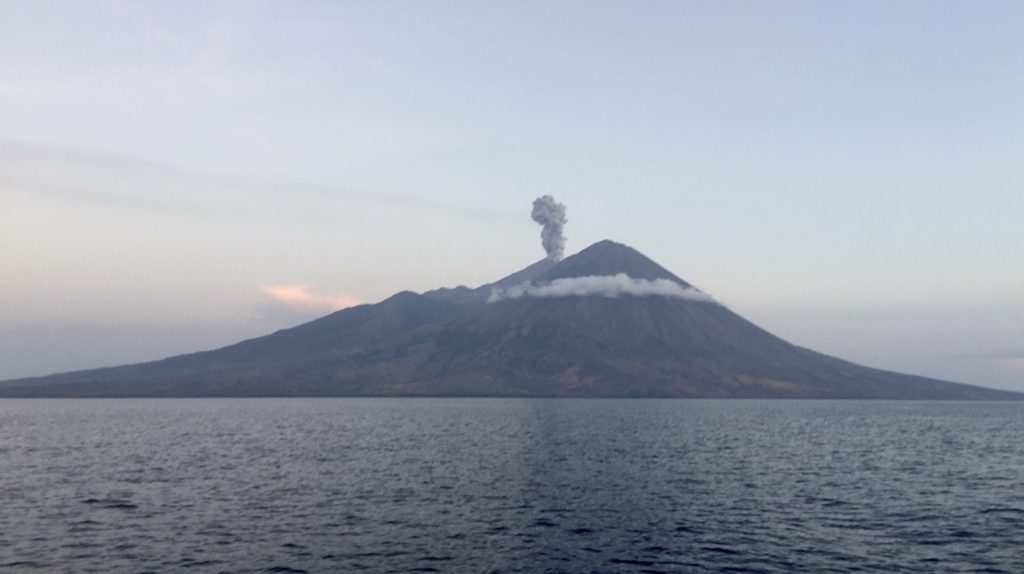
We have sailed half way around the world mostly downwind in the equatorial trades and have just now figured out how to fly this sail. The spinnaker is a very large sail made out of light materials designed for light wind sailing downwind. It is the most complex sail we have to operate. Launching this sail for the first time was a very beautiful moment.
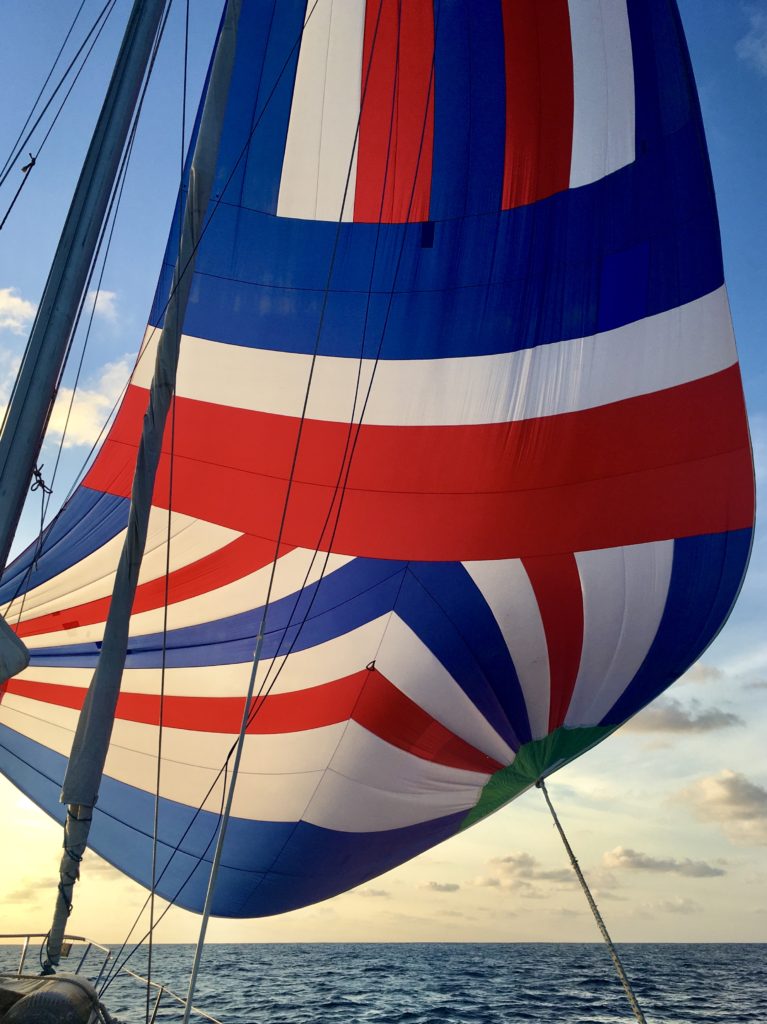
The one year anniversary of the voyage of SVSpeck serendipitously coincided with the half way longitudinal mark around the globe. One more year and one more half globe to go.
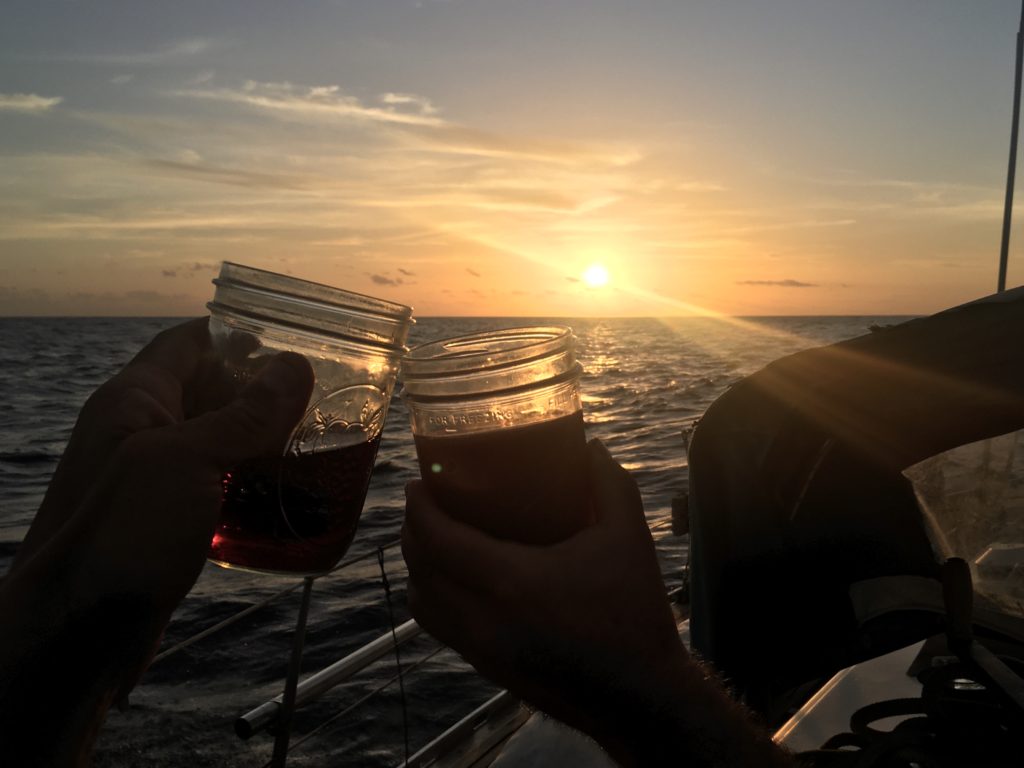
A bloody sport for sure, but line fishing is a great way to ensure ocean sustainability by only catching what you need. This fish fed us for a week.
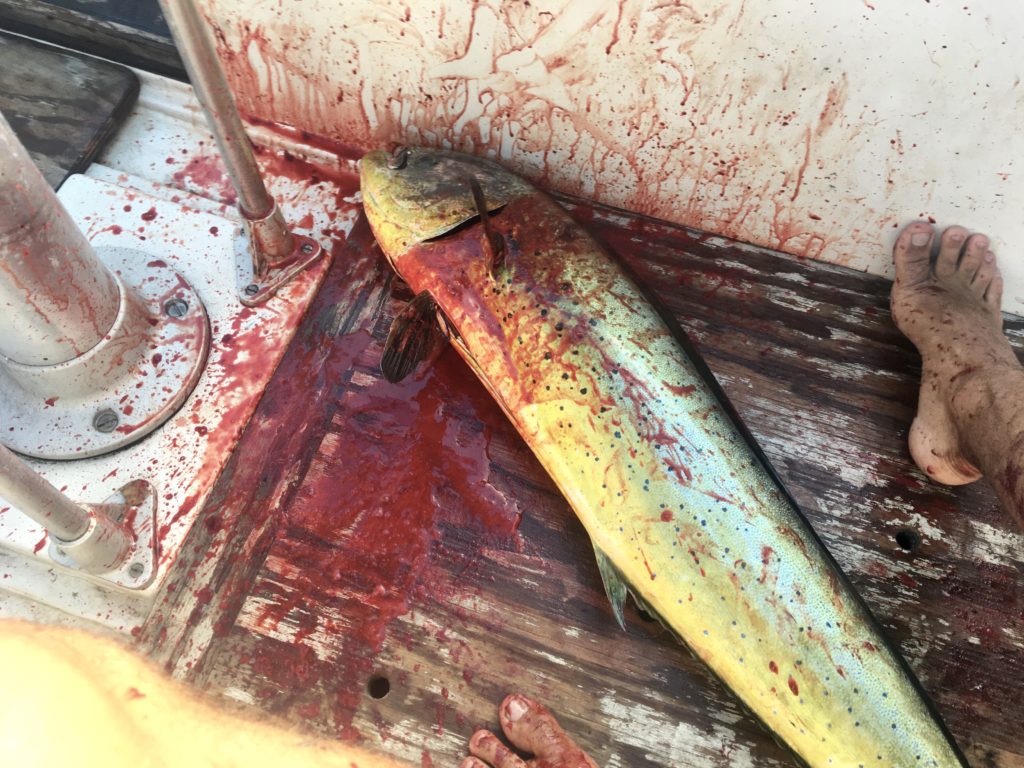
The largest fish we have caught to date measuring 3 feet 8 inches and was caught on a rod and reel we had found in the dumpster. This very large female mahi put up a tremendous fight but we were able to pull her in for a welcome break to our daily rice and beans meals.
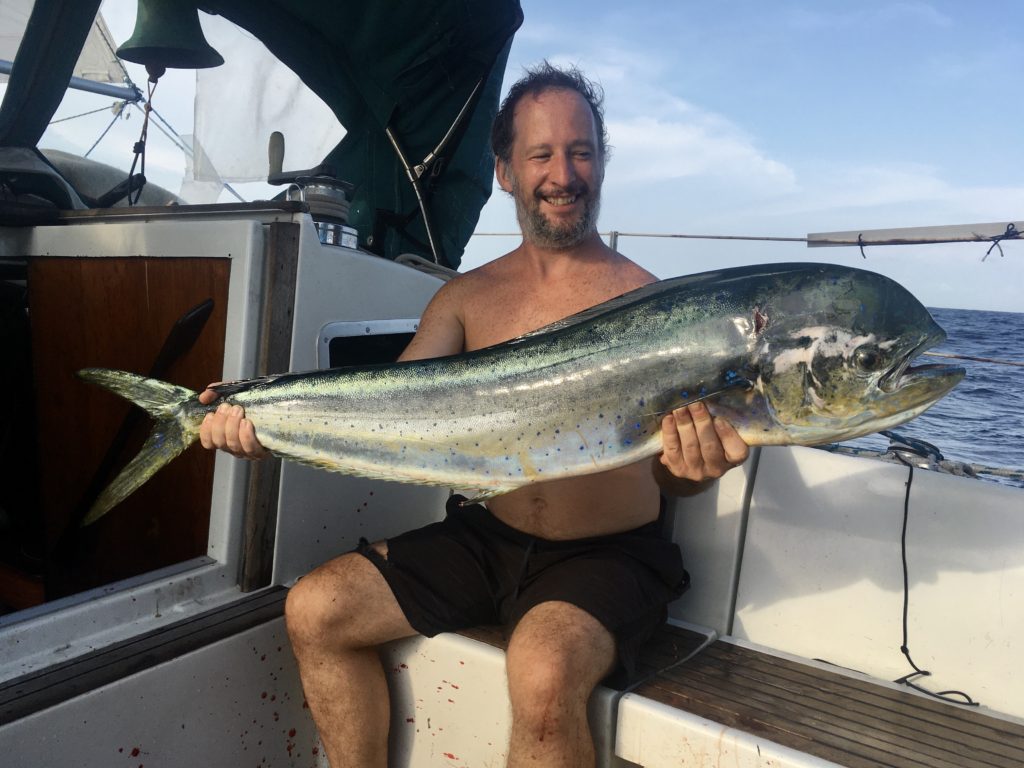
Thrown away due to the tip of the pole being snapped off, this casting rod was able to be repurposed into a great ocean trolling rod. We have caught many good sized fish with this.
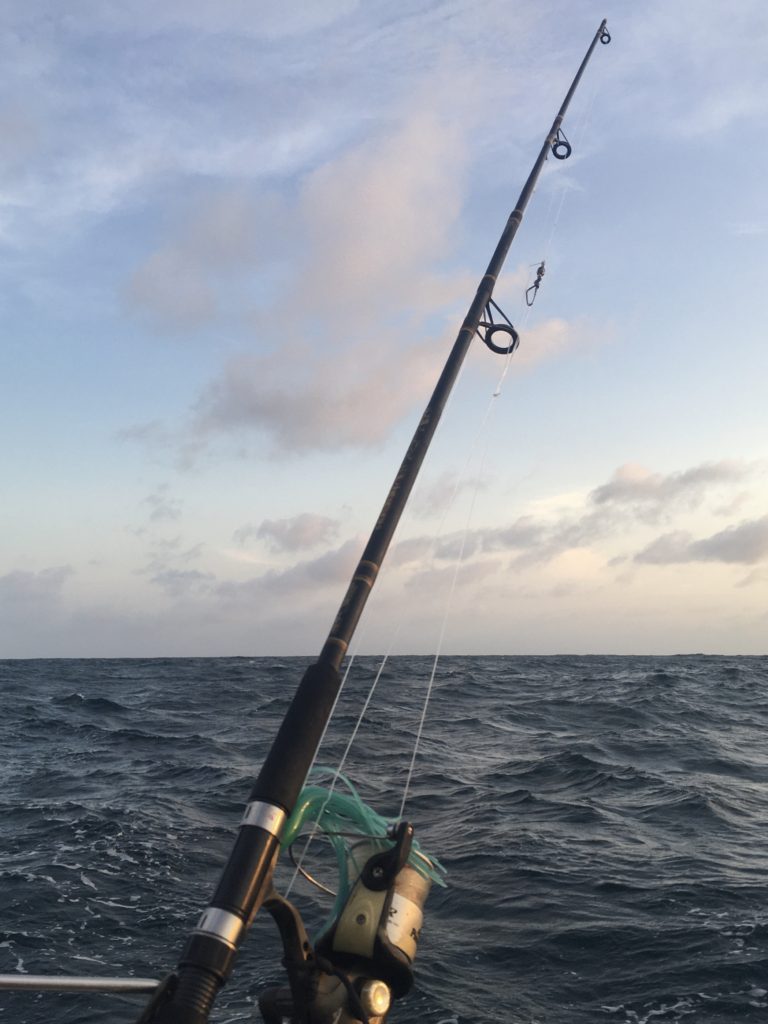
The three nights prior to our arrival in Padang were especially stormy. Here is a readout of our barometer which we are still learning how to interpret. The two massive dips in the graph represent massive pressure drops which means that a lot of wind is about to move. Almost as soon as we see a drop like this we can feel the whole boat and all of its rigging shake. The only thing to do here is to reduce the amount of sail area you have up as quickly as possible. With full sails up we went from 5 knots of wind to 45 knots of wind in under five minutes.
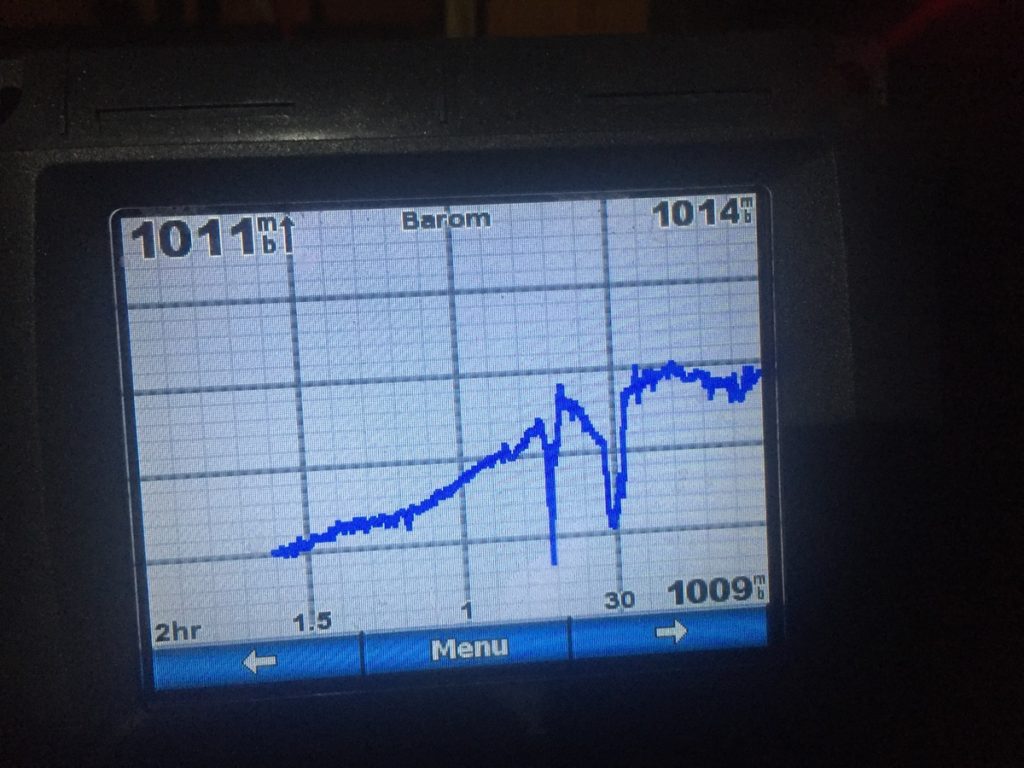
It is amazing being out in such terrifying weather and look out at the horizon and see all of this Indonesian fishing boats just bobbing along like it’s just another day. Once in harbor we were able to get a close up look at them for clues as to how they are able to handle such rough seas.
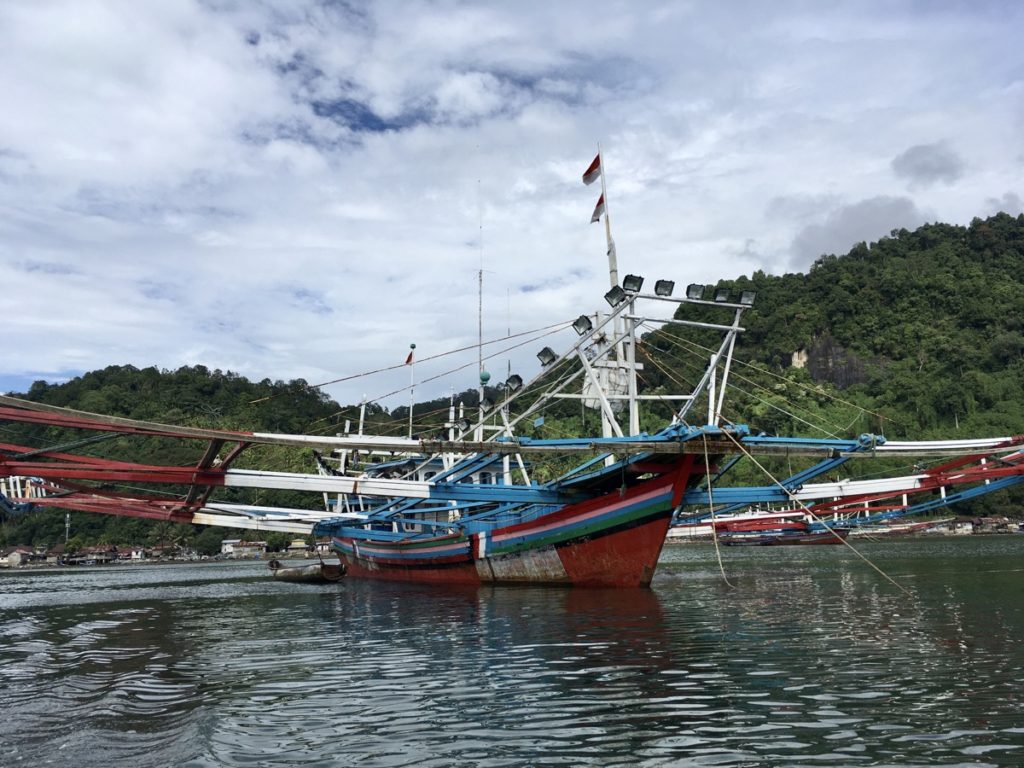
As the NE monsoon still has us on the run, we are now off to the northern island of Sabang, where we will spend a day clearing our of Indonesia and reprovisioning. Then we are off to Phuket, Thailand where we will be meeting friends and family just after the new year. Hopefully once in Phuket we will be able to slow down a bit and enjoy a 3 week stay of rest and exploration.
